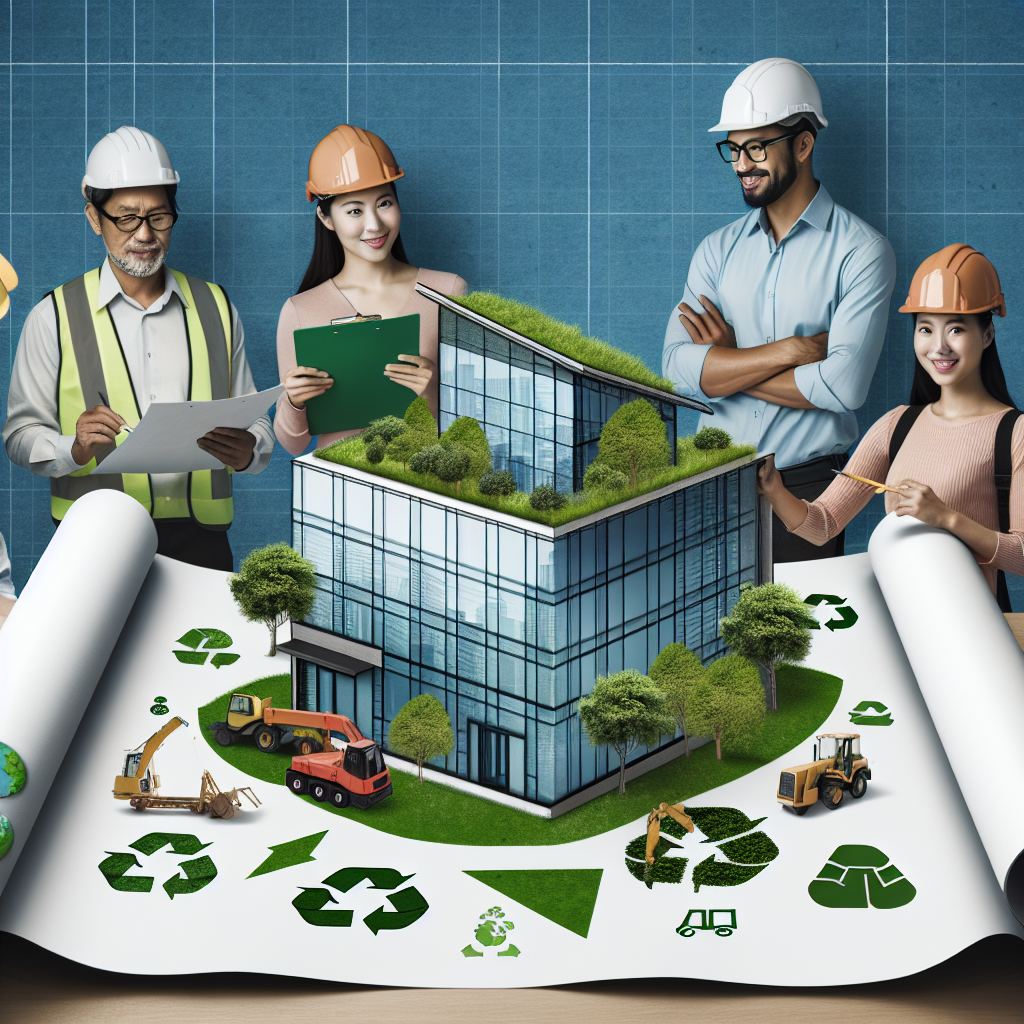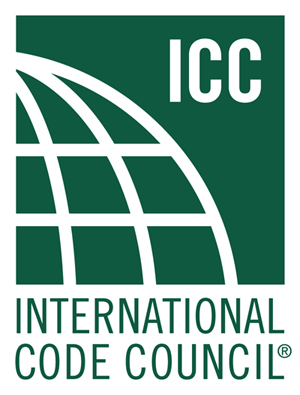Your cart is currently empty!
“How the IgCC is Advancing Sustainable Building Practices”

In an era where environmental sustainability is becoming increasingly vital, the construction industry is making strides to reduce its carbon footprint and promote green building practices. One of the most significant developments in this arena is the International Green Construction Code (IgCC). This comprehensive set of guidelines aims to help architects, engineers, and builders create structures that are not only energy-efficient but also environmentally responsible. This article delves into the various aspects of the IgCC, highlighting its key principles, benefits, and the challenges faced during its implementation.
Introduction to the International Green Construction Code
The International Green Construction Code (IgCC) is a model code that provides a framework for constructing buildings that prioritize sustainability. Developed by the International Code Council (ICC) in collaboration with various organizations, the IgCC aims to reduce the environmental impact of buildings while enhancing their overall performance. It addresses a wide range of issues, including energy efficiency, water conservation, indoor environmental quality, and the use of sustainable materials.
The IgCC is unique in that it integrates with other building codes, such as the International Building Code (IBC) and the International Energy Conservation Code (IECC). This integration ensures that green building practices are incorporated seamlessly into the broader regulatory framework, making it easier for jurisdictions to adopt and enforce the code. For more information on building codes, you can visit IBC Manual.
One of the key features of the IgCC is its flexibility. It allows jurisdictions to adopt the code in whole or in part, depending on their specific needs and priorities. This adaptability makes the IgCC a valuable tool for cities and states looking to promote sustainable building practices without imposing overly rigid requirements.
The IgCC also emphasizes the importance of performance-based standards. Rather than prescribing specific technologies or materials, the code sets performance targets that buildings must meet. This approach encourages innovation and allows builders to choose the most effective solutions for their projects.
In addition to its technical provisions, the IgCC includes requirements for commissioning and post-occupancy evaluation. These processes ensure that buildings are constructed and operated as intended, maximizing their environmental and economic benefits. This focus on performance and accountability sets the IgCC apart from other green building standards.
Overall, the IgCC represents a significant step forward in the effort to create a more sustainable built environment. By providing a clear, comprehensive, and adaptable framework for green construction, the IgCC helps builders and regulators work together to reduce the environmental impact of buildings and promote a healthier, more sustainable future.
Key Principles of the IgCC for Sustainable Building
The International Green Construction Code is built on several key principles that guide its approach to sustainable building. These principles are designed to address the various environmental, economic, and social challenges associated with construction and to promote practices that lead to more sustainable buildings.
One of the primary principles of the IgCC is energy efficiency. The code includes a range of provisions aimed at reducing the energy consumption of buildings, from requirements for high-performance building envelopes to guidelines for efficient HVAC systems and lighting. By reducing energy use, the IgCC helps to lower greenhouse gas emissions and decrease the overall environmental impact of buildings.
Water conservation is another critical principle of the IgCC. The code includes provisions for water-efficient fixtures and appliances, as well as guidelines for landscape design and irrigation systems that reduce water use. Additionally, the IgCC encourages the use of alternative water sources, such as rainwater and greywater, to further reduce the demand for potable water.
The IgCC also places a strong emphasis on indoor environmental quality. This includes provisions for adequate ventilation, the use of low-emitting materials, and guidelines for controlling moisture and mold. By ensuring good indoor air quality, the IgCC helps to create healthier and more comfortable living and working environments.
Sustainable materials and resources are another key focus of the IgCC. The code encourages the use of materials that are environmentally responsible, such as those that are recycled, rapidly renewable, or locally sourced. It also includes provisions for construction waste management, promoting practices that reduce waste and encourage recycling and reuse.
Resilience and adaptability are also important principles of the IgCC. The code includes guidelines for designing buildings that can withstand natural disasters and adapt to changing conditions. This helps to ensure that buildings remain functional and safe over their entire lifecycle, even in the face of environmental challenges.
Finally, the IgCC emphasizes the importance of integrated design and collaborative processes. By encouraging architects, engineers, builders, and other stakeholders to work together from the earliest stages of a project, the code helps to ensure that sustainable practices are incorporated into all aspects of the building process. This holistic approach is essential for achieving the high levels of performance and sustainability that the IgCC aims to promote.
Benefits of Adopting the IgCC in Construction Projects
Adopting the International Green Construction Code in construction projects offers numerous benefits, both for individual buildings and for the broader community. These benefits extend to environmental, economic, and social aspects, making the IgCC a valuable tool for promoting sustainable development.
One of the most significant benefits of adopting the IgCC is the reduction in energy consumption. By implementing the code’s provisions for energy-efficient building envelopes, HVAC systems, and lighting, buildings can significantly reduce their energy use. This not only lowers operating costs for building owners and occupants but also reduces greenhouse gas emissions, contributing to the fight against climate change.
Water conservation is another major benefit of the IgCC. The code’s guidelines for water-efficient fixtures, appliances, and landscape design help to reduce water use, which is particularly important in areas facing water scarcity. By promoting the use of alternative water sources, the IgCC also helps to reduce the demand for potable water, easing the strain on local water supplies.
Improved indoor environmental quality is a key benefit of the IgCC. By ensuring adequate ventilation and the use of low-emitting materials, the code helps to create healthier indoor environments. This can lead to better health outcomes for building occupants, reducing the incidence of respiratory problems and other health issues associated with poor indoor air quality.
The use of sustainable materials and resources is another important benefit of the IgCC. By encouraging the use of recycled, rapidly renewable, and locally sourced materials, the code helps to reduce the environmental impact of construction. This not only conserves natural resources but also supports local economies and reduces the carbon footprint associated with transporting materials over long distances.
Resilience and adaptability are also key benefits of adopting the IgCC. By designing buildings that can withstand natural disasters and adapt to changing conditions, the code helps to ensure that buildings remain functional and safe over their entire lifecycle. This can reduce the need for costly repairs and renovations and help to protect the investment in the building.
Finally, the integrated design and collaborative processes promoted by the IgCC can lead to better overall project outcomes. By encouraging stakeholders to work together from the earliest stages of a project, the code helps to ensure that sustainable practices are incorporated into all aspects of the building process. This holistic approach can lead to higher levels of performance and sustainability, benefiting both the building and the broader community.
Challenges and Solutions in Implementing the IgCC
Implementing the International Green Construction Code in construction projects can present several challenges. However, by understanding these challenges and exploring potential solutions, builders and regulators can more effectively promote sustainable building practices.
One of the primary challenges in implementing the IgCC is the initial cost. Sustainable building practices and materials can be more expensive upfront compared to conventional options. However, these costs can often be offset by the long-term savings in energy and water bills, as well as the reduced maintenance costs associated with high-performance buildings. Additionally, incentives and financing options are available in many jurisdictions to help offset the initial costs of green building.
Another challenge is the need for education and training. Builders, architects, and engineers may not be familiar with the provisions of the IgCC or the best practices for implementing them. To address this, it is essential to provide comprehensive education and training programs that help stakeholders understand the code and how to apply it effectively. This can include workshops, online courses, and certification programs.
Regulatory barriers can also pose a challenge to the implementation of the IgCC. In some jurisdictions, existing building codes and regulations may conflict with the provisions of the IgCC, making it difficult to adopt and enforce the code. To overcome this, it is important to work with local authorities to harmonize building codes and create a regulatory framework that supports sustainable building practices.
Another challenge is the availability of sustainable materials and technologies. In some areas, builders may have difficulty sourcing the materials and technologies needed to meet the requirements of the IgCC. To address this, it is important to develop local supply chains and support the growth of the green building industry. This can include providing incentives for manufacturers and suppliers of sustainable materials and technologies.
Performance verification and enforcement can also be challenging. Ensuring that buildings meet the performance targets set by the IgCC requires rigorous testing and inspection processes. This can be resource-intensive and may require additional training for inspectors and other officials. To address this, it is important to develop clear and efficient processes for performance verification and to provide the necessary resources and training.
Finally, public awareness and acceptance can be a challenge. Building owners and occupants may not be aware of the benefits of green building practices or may be resistant to change. To address this, it is important to engage in public outreach and education efforts that highlight the benefits of the IgCC and promote the value of sustainable building practices. This can include public campaigns, informational materials, and community events.
The International Green Construction Code represents a significant advancement in promoting sustainable building practices. By providing a comprehensive framework that addresses energy efficiency, water conservation, indoor environmental quality, and the use of sustainable materials, the IgCC helps to create buildings that are environmentally responsible and economically viable. While there are challenges to implementing the IgCC, these can be overcome through education, regulatory alignment, and public engagement. By adopting the IgCC, builders and regulators can work together to create a more sustainable built environment, benefiting both current and future generations. For more detailed information on building codes, visit IBC Manual.
